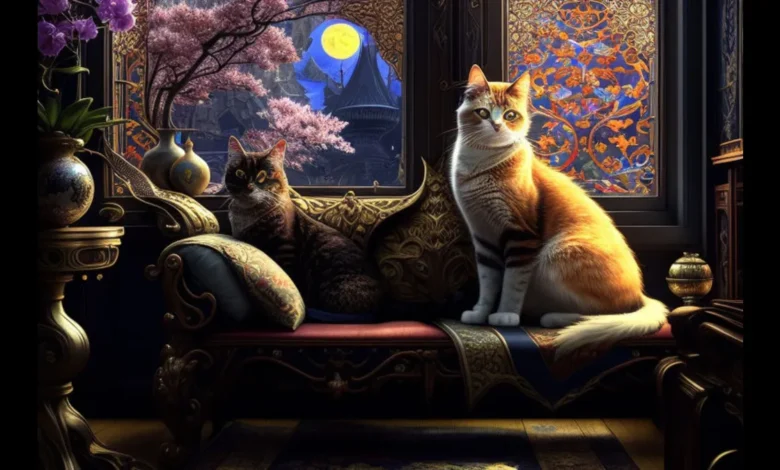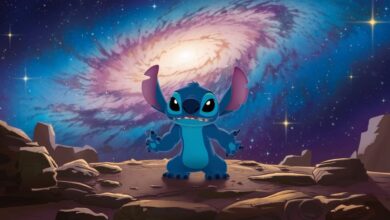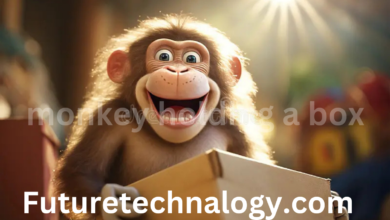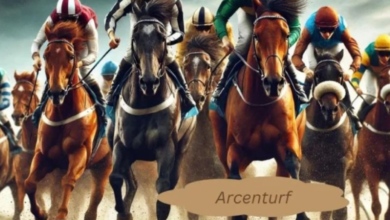The Ultimate Guide to Art:mfyjcu3hidu= Cat: Exploring the World of Cat-Inspired Art
art:mfyjcu3hidu= cat

art:mfyjcu3hidu= cat Cats have long been a source of fascination in the art world. From ancient civilizations to the present day, artists have been captivated by these enigmatic creatures. Today, the term art:mfyjcu3hidu= cat has emerged as a unique concept within the art world, blending digital innovation with the timeless allure of cats. This guide explores the history, evolution, and impact of cat-inspired art, focusing on how the digital age has transformed the way we appreciate and create cat art.
What is Art:mfyjcu3hidu= Cat?
The phrase art:mfyjcu3hidu= cat may sound like a jumble of random characters, but it actually refers to a unique form of digital art that involves cats as a central theme. While the exact meaning of “mfyjcu3hidu” might not be immediately clear, the term broadly represents a modern intersection of technology, creativity, and feline fascination. In essence, it highlights the fusion of cat imagery with digital platforms, often produced through artificial intelligence or algorithmic art tools.
Cats have been integral in visual art for centuries, but the term art:mfyjcu3hidu= cat captures the growing trend of using cutting-edge technologies to create and share cat-inspired art. This includes everything from digital paintings to NFT (non-fungible token) artworks, where images of cats are transformed into unique, sellable digital assets. As the world becomes more digitally connected, this new form of art allows people to express their love for cats while engaging with modern platforms art:mfyjcu3hidu= cat.
Throughout history, cats have been portrayed in countless mediums, from ancient Egyptian wall paintings to contemporary digital art. However, the digital age has opened up new avenues for experimentation with styles, formats, and methods. Through the lens of art:mfyjcu3hidu= cat, we see how the love for cats continues to inspire innovation, offering a fresh perspective on this age-old subject.
The Evolution of Cat Art: From Traditional to Modern
Cats have appeared in art since the beginning of human civilization, with their first representations seen in ancient Egypt, where they were revered as symbols of grace and mystery. Egyptians often depicted cats as sacred creatures, associated with the goddess Bastet, the goddess of home, fertility, and protection. Their stylized depictions in Egyptian art were not just artistic expressions, but also conveyed deeper cultural meanings about the reverence for cats and their role in society.
Fast forward to the Renaissance, and cats remained a popular subject in European art. In paintings by artists like Leonardo da Vinci, cats were often portrayed as companions to women, symbolizing both independence and beauty. By the 19th and early 20th centuries, cats became central figures in modern art movements. Artists like Henriette Ronner-Knip and Tsuguharu Foujita turned cats into key motifs in their works, elevating them from mere pets to symbols of artistic freedom and rebellion art:mfyjcu3hidu= cat.
In the modern era, the internet and social media have completely transformed the way artists engage with cats in their work. The rise of meme culture, combined with platforms like Instagram and Tumblr, has propelled the popularity of cat-themed art to new heights. Artists now have instant access to a global audience, allowing them to share and sell their cat art through digital galleries, online marketplaces, and social media channels. The art:mfyjcu3hidu= cat concept embodies this digital revolution, where art is created, shared, and appreciated in entirely new ways.
The popularity of cat art has also spurred the creation of niche communities and online subcultures. Websites like DeviantArt and Etsy are filled with thousands of cat-inspired artworks, ranging from cute illustrations to abstract digital pieces. This evolution from traditional to modern cat art illustrates the shifting cultural landscape, where cats are not only celebrated as subjects of aesthetic beauty but also as symbols of creativity, freedom, and digital innovation.
The Impact of Digital Art on the Art:mfyjcu3hidu= Cat Movement
In recent years, digital art has rapidly gained recognition, and the art:mfyjcu3hidu= cat movement is at the forefront of this change. Thanks to the proliferation of powerful graphic design tools and AI-driven programs, artists now have the ability to create incredibly detailed and unique works of art featuring cats, all from the comfort of their computers. Digital platforms have given rise to a new era of art-making where traditional techniques meet high-tech innovation.
Artificial intelligence (AI) plays a pivotal role in this movement. Many contemporary artists now use AI to generate cat art, employing algorithms that create new images based on a set of input parameters. These AI-generated works are often abstract or surreal, blending real-world imagery with futuristic or dreamlike effects. In some cases, AI is used to enhance or transform traditional artworks into digital formats that can be easily shared and sold across global online platforms.
Moreover, the rise of NFTs has created an entirely new market for cat-themed digital art. NFTs are unique digital tokens that represent ownership of a specific digital asset, often used to buy, sell, and trade digital art. Cat-themed NFTs have gained traction among collectors, as they allow art lovers to own a piece of art in a way that was not possible in the traditional art world. Art:mfyjcu3hidu= cat is thriving in this digital space, offering an accessible and modern platform for creators and buyers to connect.
Virtual and augmented reality (VR/AR) are also beginning to influence the world of cat art. With the ability to create immersive, interactive experiences, VR/AR technology allows artists to design cat-inspired virtual worlds and experiences. For example, visitors can explore a digital gallery where cats roam in 3D spaces, or interact with augmented cat sculptures that appear through their phone screens. These advances have expanded the creative possibilities for cat-themed art, allowing for greater interactivity and engagement.
Why Are Cats So Popular in Art?
The question of why cats are such a pervasive theme in art can be traced to both psychological and cultural factors. First and foremost, cats possess an enigmatic allure. They are mysterious and independent creatures, with their quiet, graceful movements and expressive eyes often conveying a sense of intrigue. In many ways, cats mirror the traits of the artist themselves—independent, elusive, and often hard to pin down. This sense of mystery makes cats an ideal subject for art, as they offer infinite possibilities for interpretation.
Furthermore, cats symbolize beauty, freedom, and individuality. Whether lounging in a sunbeam or playfully chasing a toy, cats exhibit a unique blend of elegance and whimsy that resonates with many viewers. In modern art, cats are often used to represent personal freedom or rebellion, particularly as seen in surrealist and pop art movements. The playful nature of cats also allows artists to explore a wide range of styles, from realistic portrayals to abstract interpretations.
In the digital age, the appeal of cats is amplified by the internet. From viral cat videos to viral memes, cats have become a symbol of internet culture, representing everything from humor to nostalgia. Their popularity online has created a global community of cat lovers who use art as a way to connect, share, and celebrate their love for these furry companions. This cultural shift has played a significant role in the widespread appeal of art:mfyjcu3hidu= cat and its ability to resonate with a diverse audience.
How to Collect and Display Art:mfyjcu3hidu= Cat in Your Home
As digital art becomes more accessible, it has also become easier for individuals to collect and display cat-themed art in their homes. Whether you’re drawn to traditional paintings, digital illustrations, or NFT artworks, there are countless ways to incorporate cat art into your living space. The first step is to explore online galleries, platforms like Etsy, or digital art marketplaces that specialize in cat-inspired artworks. These platforms feature a wide range of styles and formats, offering something for every taste.
Once you’ve selected your pieces, consider how to display them in your home. For digital art, you can print high-quality versions of your favorite works and frame them just like traditional art. Alternatively, you can create a digital gallery by displaying digital frames that rotate through different cat artworks. For those who prefer to keep their collection strictly digital, consider using platforms like Instagram or Pinterest to showcase your collection in a visually appealing way.
Cat-themed art also works well in various home decor styles. Whether you live in a minimalist space, a cozy cottage, or a sleek modern apartment, you can find ways to integrate cat art seamlessly into your home. For example, opt for a bold, abstract cat piece to make a statement in your living room, or choose smaller, more subtle cat illustrations to add personality to your bedroom or office. Whatever your style, cat-inspired art can bring a sense of playfulness and charm to any space.
Conclusion
Art:mfyjcu3hidu= cat represents a vibrant and ever-evolving movement that bridges the world of traditional art with the limitless possibilities of the digital age. From ancient depictions to modern-day digital creations, cats have remained a powerful muse for artists across generations. As technology continues to shape the art world, we can expect the popularity of cat-themed art to only grow, offering new ways for creators and collectors to engage with these fascinating creatures. Whether through AI, NFTs, or traditional media, art:mfyjcu3hidu= cat is more than just a passing trend—it’s a cultural movement that celebrates the timeless connection between cats and art.



